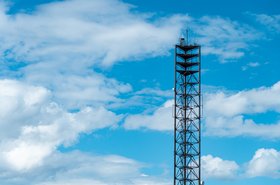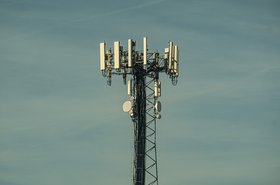With the AI surge driving rapid development of new data centers across the globe, many data center owners and operators are seeking innovative solutions to help them maintain safe, efficient, and profitable operations.
A critical part of keeping data centers running safely, efficiently, and profitably is ensuring appropriate fire protection is always in place. When choosing fire protection for data centers, the need for data continuity and the consequences of data loss must be considered. Fire can cause irreparable damage to servers, potentially leading to catastrophic data losses like banking transactions, health records, or intellectual property.
While fire suppression has typically been prioritized in the protection of data centers, fire detection is more important than ever because it can provide advanced warning and valuable time to react. Without early detection, smoldering fires can go unnoticed, particularly in areas of densely packed electrical equipment, until they reach a more critical stage. Early detection helps data center operators decrease the risk of personnel injury and equipment or data loss, as well as reduce potential downtime.
Thanks to recent innovations in aspirating smoke detection (ASD) technology, data center operators can now access highly precise fire detection readings and early warnings of potential fire events, even on their mobile devices, by having ASD integrated directly with their facility’s fire alarm system.
How ASD systems work
ASD systems have a long track record of protecting sensitive areas. Initially developed in the 1980s, this evolving technology effectively “sniffs” out fires before they happen. A network of small, perforated pipes installed throughout the data center draws in air samples. The air sample pipes can be strategically placed near, above, or even within, server racks and power supply areas, which are common sources of overheating and smoldering.
An air pump, or aspirator, actively pulls air through the sampling pipes and delivers it to the detection unit, which analyzes the sample using highly sensitive LED-based or laser-based technology. ASD systems can detect smoke particles at concentrations much lower than traditional smoke detectors, often before they’re visible to the naked eye.
If the concentration of smoldering particles exceeds the set threshold, the system issues an early warning alarm to alert building operators. The operators can then assess the situation and, if needed, activate fire risk procedures.
The advantages of ASD systems in data centers
Because of the unique way ASD systems work, they offer data center building operators several advantages:
- Effectiveness in high-airflow environments: Server rooms circulate large, consistent volumes of air to cool the equipment. ASD systems seamlessly collect samples from predetermined locations all around the server room, so moving air does not impact operations.
- Customizable risk management: ASD systems give building operators flexibility to program sensitivity levels that align with the needs of specific zones. For example, setting lower sensitivity in non-critical areas can reduce the risk of false alarms. Likewise, elevated sensitivity levels near high-density server racks or battery storage areas can help ensure more rapid detection and response.
- False alarm reduction: ASD systems employ highly sensitive smoke detection to distinguish between harmless dust particles and actual smoke, reducing the risk of false alarms and increasing peace of mind.
- Efficient fire detection: An ASD system can cover larger areas with a single detection unit, making it cost-efficient for protecting expansive or complex data centers.
The opportunity for earlier warnings
With a standalone ASD system, facility personnel must be in the same vicinity as the ASD panel to see or hear an alarm. This means personnel may not be immediately aware of an alarm, losing crucial reaction time that could be spent addressing the event before an actual fire occurs.
To enhance ASD system alarm communication, data center teams can implement ASD technology that integrates directly with their fire alarm system. This gives teams the ability to view ASD activity alongside all other fire alarm activity on a central dashboard.
To add an extra layer of early warning, data center teams can also install a remote activity monitoring device providing cloud-based dashboard access and mobile notifications. Having this information available in their pocket 24/7 allows data center operators to monitor and manage fire detection systems from any location. This is especially valuable to those who manage multiple data centers regionally or across the globe.
When fully integrated, an ASD system can trigger two stages of alarms:
- The first alarm is an early warning indicating an increase in smoldering particles. This is not a full alarm yet but a warning that a fire event could be imminent.
- The second alarm happens when the system detects smoke and requires immediate attention. This is followed by the activation of local alarms or annunciators to alert occupants.
Multi-level alarms allow for early investigation and intervention before a fire event occurs, especially when delivered straight to a mobile device. Ideally, this means looking into the source of the issue and powering down equipment before any serious damage can occur.
Enhancing round-the-clock protection for your data center
Adding aspirating smoke detection to traditional fire suppression systems can make a lot of financial sense. By detecting smoldering fires before they reach a more critical stage, early detection can help data center operators decrease the risk of personnel injury, equipment or data loss, and potential downtime.
ASD systems are valuable tools for detecting fire events in their earliest stages. They can provide even more value when integrated with a fire alarm system that offers remote activity monitoring and real-time connectivity.
The easiest way to ensure your data center is protected by a safe, compatible, integrated detection system is by working with a full-service solutions provider with experience solving challenges in the data center industry. These providers can conduct a comprehensive risk assessment that helps ensure you install or upgrade to a fire detection system that makes every second count — so your data center runs safely and profitably.





